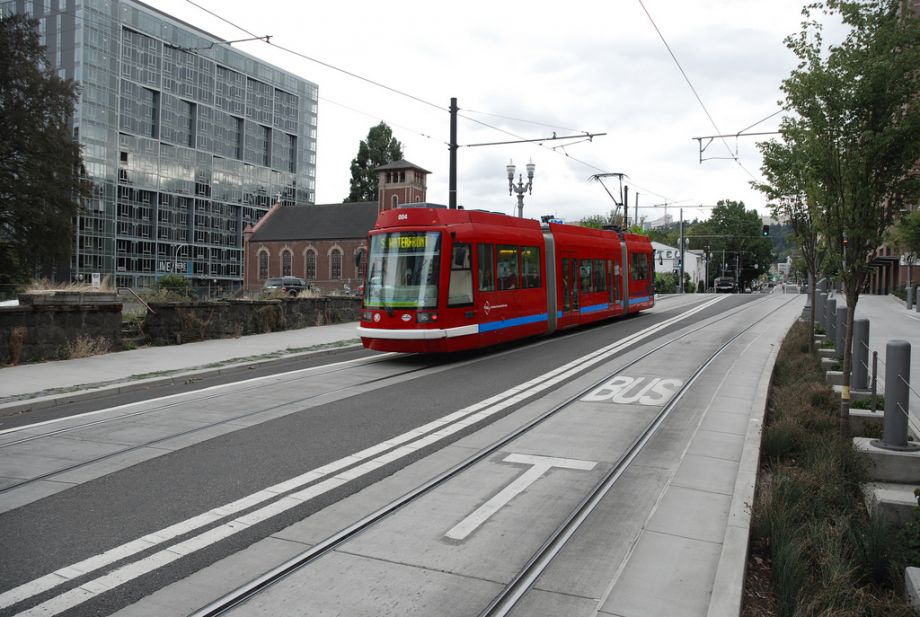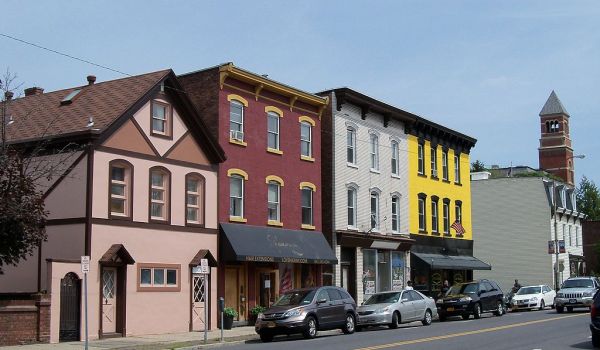For decades, many urban planners have argued that the link between transportation and land use is unbreakable; the kind of communities we live in directly affect the way we get around, and vice-versa. Yet that line of reasoning, no matter its self-evidence, has frequently been ignored by government policy-makers over the years, most notably in the decision of the Johnson Administration during the mid-1960s to form separate cabinet-level departments for the two issues.
Yet the Obama Administration has followed a different tact, promoting links between agencies that once operated completely independently. This policy was solidified with the announcement last year of the smart growth partnership between the Environmental Protection Agency, the Department of Transportation (DOT), and the Department of Housing and Urban Development. The administrations plan to work together to address their common goals.
But this intense new focus may be getting in the way of the mobility-oriented principals formerly prioritized in the DOT’s grant distribution. In the past, when it came to public transportation projects, the federal government encouraged cities to build train and bus corridors that shuttled people over long distances as quickly as possible. That’s just about the opposite of the goals of this new program, which emphasizes the creation of dense neighborhoods where people perform most of their daily tasks within a tight radius.
In that vein earlier this month the DOT announced that it would allocate almost $300 million in small grants to cities across the country for urban transit improvement projects in the form of streetcar lines in cities like Charlotte and Cincinnati and bus rapid transit in New York City and Chicago. These investments would promote not simply the transport of people around town (as most DOT grants do), but also alterations in the physical environment, lining up with the housing and environmental efforts of others in the federal government.
In fact, writing for the Dallas News, journalist Michael Lindenberger explained that when it comes to these grants, federal policy is now explicitly aimed towards changing land use and developing “livable” communities. Peter Rogoff, head of the Federal Transit Administration, told Lindenberger that “When we look at these grants we are going to look not just at ridership but at the economic development successes.” The agency has reduced its emphasis on the “cost-effectiveness” principle grounded in high ridership that used to guide its investments.
At first glance, this is an excellent policy change. Big housing and commercial projects are too often built without a second thought for transportation issues, even in big cities; meanwhile, transit systems are sometimes implemented with only minor consideration for associated construction. The two issues should be thought of as one.
But is the DOT putting too much thought into land use effects and not enough into transportation itself? None of the streetcar systems that were awarded funding earlier this month are likely to carry more than 5,000 daily riders, a pittance in huge metropolitan areas, and certainly fewer than cheaper improvements in buses might allow. Is each worth the $25 million Washington is planning to allocate to it, just because of the expected economic improvements that will follow?
The federal government must ask itself a fundamental question: Is the role of the DOT to fund improvements in the urban environment of cities, or is it supposed to merely invest in getting as many people around as possible?
Nevertheless, Administrator Rogoff suggested to Linderberger that this isn’t “an overwhelming shift,” and he’s right; the annual federal public transportation budget is $8 billion. In other words, Washington can afford to spend both on those major mobility projects it’s used to as well as these economic development generators.
More importantly, the emphasis on transportation that produces denser, walkable neighborhoods may be a sounder investment in the long-term than seemingly higher-ridership projects that might have better fit into the DOT’s old cost-effectiveness standards. These areas are more likely to house people who don’t have any automobiles at all; these are people whose range of movement is limited because most of the things they need are within walking distance. Conversely for a formerly mobility-oriented DOT, these new investments may actually be promoting environments where people don’t need to take as many trips using motorized transportation. A step forward for transportation investment in the United States could in some ways involve moving less.

Yonah Freemark is a senior research associate in the Metropolitan Housing and Communities Policy Center at the Urban Institute, where he is the research director of the Land Use Lab at Urban. His research focuses on the intersection of land use, affordable housing, transportation, and governance.
















